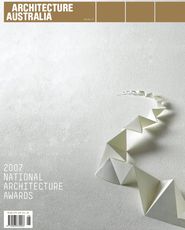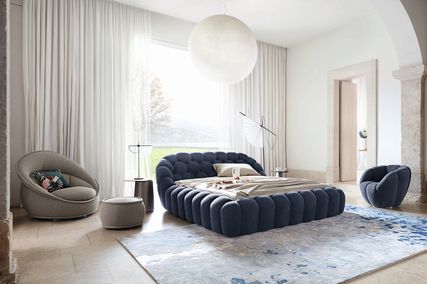ARCHITECTURAL VALUE — REAL OR VIRTUAL?

The RAIA National Awards is one of the important opportunities to reflect on decisions made and, from the collective knowledge that we carry, to consider the architecture of today and for the future. Almost nobody except the national awards jury will have visited all the shortlisted contenders and experienced the buildings in “real time and place”. We, unlike the jury, will rely on increasingly sophisticated virtual tools to form our views.
The extraordinary development and application of virtual tools in designing and communicating architecture is the most significant change the profession has experienced in a very long time. Arguably, the new design and construction tools for virtual modelling and information management will have as great an impact on the building professions as the changes brought about by new material science and technology in the late nineteenth century and through most of the twentieth century.
Virtual technology affects every aspect of architectural practice and its offerings now frequently form the basis for all forms of debate within the profession. Virtual information also influences the selection of architects and cultural assessment of projects in the mass media. With the rise of this technology, we have seen reputations made and sustained by virtual architecture communicated through the media. As a direct consequence of virtual architecture’s abundance and availability, we now experience and debate architectural ideas that often have little to do with “real time and place”.
Today, architectural propositions are sometimes formed from a precept that consciously downplays or even ignores issues such as functionality or context. Is this a result of the enormous power of virtual design tools when, more than at any other time in history, it is easier to provide graphics that engage with ideas about form and space in the context of a virtual or “future” world?
As has always been the case in architectural history, the tools we use to conceive architecture influence the way we communicate ideas and make architecture. For the architect the new sophistication of virtual modelling is liberating. Along with new ways of working, architects can and do still use conventional or non-digital tools. Far from being irrelevant, older methods and practices such as hand drawings and physical models are often invaluable, as they provide more appropriate “technology” for conceiving and communicating architecture. The architect today simply has more choices and additional, extraordinary tools.
To understand the value of new architecture, it is as important as ever to experience it in “real time and place”. Critical information for assessing architecture comes from many things, including its actual use, material character, spatial effects and contribution to the public domain. Experiencing architecture in real time and place remains for many the ultimate test of its lasting value, which is why the RAIA award system requires a jury to visit buildings. Even for awards that can’t practically be assessed through a jury visit, as with the international category, it is accepted that the selection process using extensive virtual representation is not as effective – it is always better to assess architecture from direct experience. Virtual concepts in architecture do not always translate into useful architectural concepts in the physical world.
A significant difference in understanding comes from experiencing a building compared with assessing the same building through virtual media, and it remains an important educational requirement for students of architecture to develop the skills to differentiate real outcomes from virtual modelling. As with all tools, understanding the limits of virtual technology is as important as knowing how to use the technology to greatest advantage. Tools remain a means and not an end for those most interested in making buildings and places of lasting value.
As so many more people live with virtual architecture through the media, more reputations in architecture have been made through virtual experience than ever before. Yet reputations of lasting value are more likely to be made from the experience of architecture in real time and place, as virtual architecture is just that – it cannot replace actual experience and real value to the community it serves.
Alec Tzannes
National President RAIA















